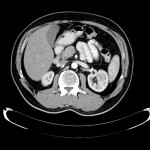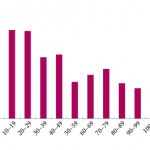Video: Transperineal prostate biopsy: how good is the tumour detection rate?
Outcomes of transperineal template-guided prostate biopsy in 409 patients
James L. Symons*†, Andrew Huo*, Carlo L. Yuen‡§, Anne-Maree Haynes*, Jayne Matthews†, Robert L. Sutherland*, Phillip Brenner‡§ and Phillip D. Stricker†‡§
*Cancer Research Programme, Garvan Institute of Medical Research, †St Vincent’s Prostate Cancer Centre, ‡Department of Urology, St. Vincent’s Hospital, and §Department of Urology, St. Vincent’s Clinic, Darlinghurst, NSW, Australia
OBJECTIVE
• To present the template-guided transperineal prostate biopsy (TPB) outcomes for patients of two urologists from a single institution.
PATIENTS AND METHODS
• We conducted a prospective study of 409 consecutive men who underwent TPB between December 2006 and June 2008 in a tertiary referral centre using a standardized 14-region technique.
• The procedure was performed as day surgery under general anaesthesia with fluoroquinolone antibiotic cover.
• Follow-up took place within 2 weeks, during which time men were interviewed using a standardized template.
• Results were compared with those of the Australian national prostate biopsy audits performed by the Urological Society of Australia and New Zealand (USANZ).
RESULTS
• Indications for biopsy included elevated prostate-specific antigen (PSA) level (75%), with a median PSA level of 6.5 ng/mL, abnormal digital rectal examination (8%) and active surveillance (AS) re-staging (18%).
• The mean patient age was 63 years and two-thirds of patients were undergoing their first biopsy.
• A positive biopsy was found in 232 men, 74% of whom had a Gleason score of ≥7. The overall cancer detection rate was 56.7% (USANZ 2005 national audit = 56.5%). Stratified between those having their first TPB or a repeat procedure (after a previous negative biopsy), the detection rates were 64.4 and 35.6%, respectively. Significantly higher detection rates were found in prostates <50 mL in volume than in larger prostates (65.2 vs 38.3%, respectively, P < 0.001).
• Haematuria was the most common side effect (51.7%). Others included dysuria (16.4%), acute urinary retention (4.2%) and fever (3.2%). One patient (0.2%) had septicaemia requiring i.v. antibiotics.
• Repeat biopsy was not associated with increased complication rates.
CONCLUSIONS
• TPB is a safe and efficacious technique, with a cancer detection rate of 56.7% in the present series, and a low incidence of major side effects. Stratified by prostate volume, the detection rate of TPB was higher in smaller glands.
• Given the relatively low rate of serious complications, clinicians could consider increasing the number of TPB biopsy cores in larger prostates as a strategy to improve cancer detection within this group. Conversely, in patients on AS programmes, a staging TPB may be a superior approach for patients undergoing repeat biopsy so as to minimize their risk of serious infection.



